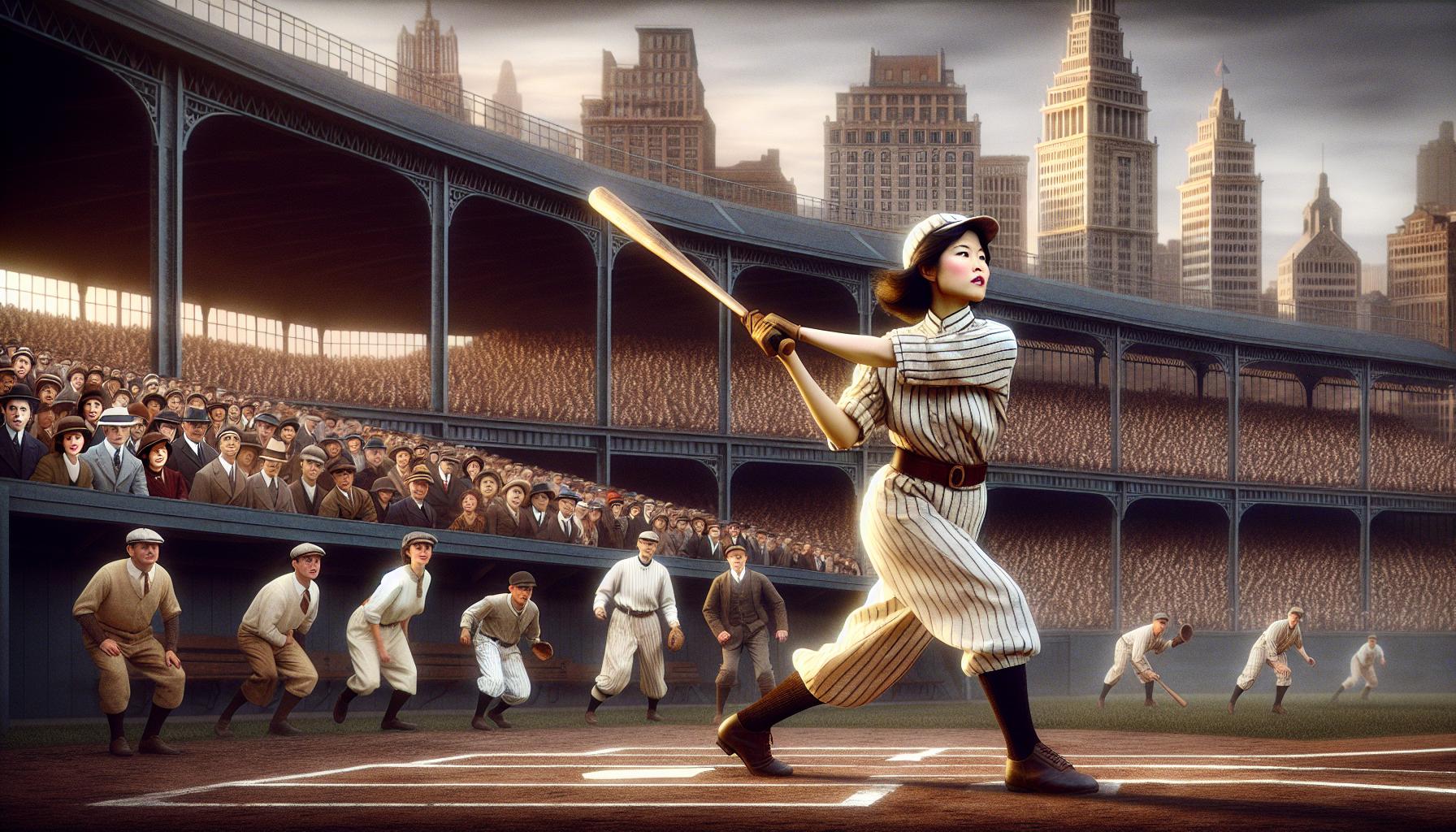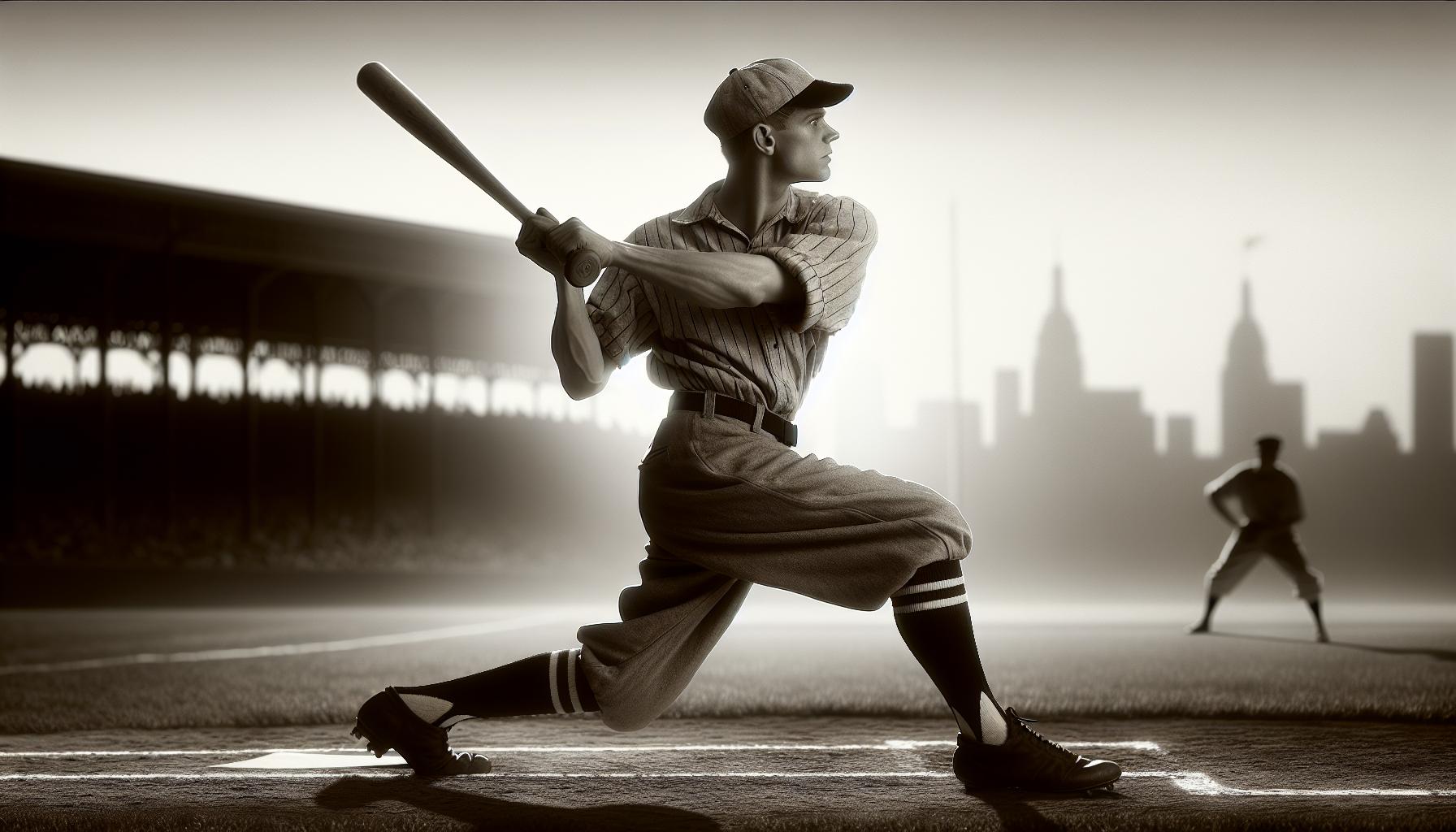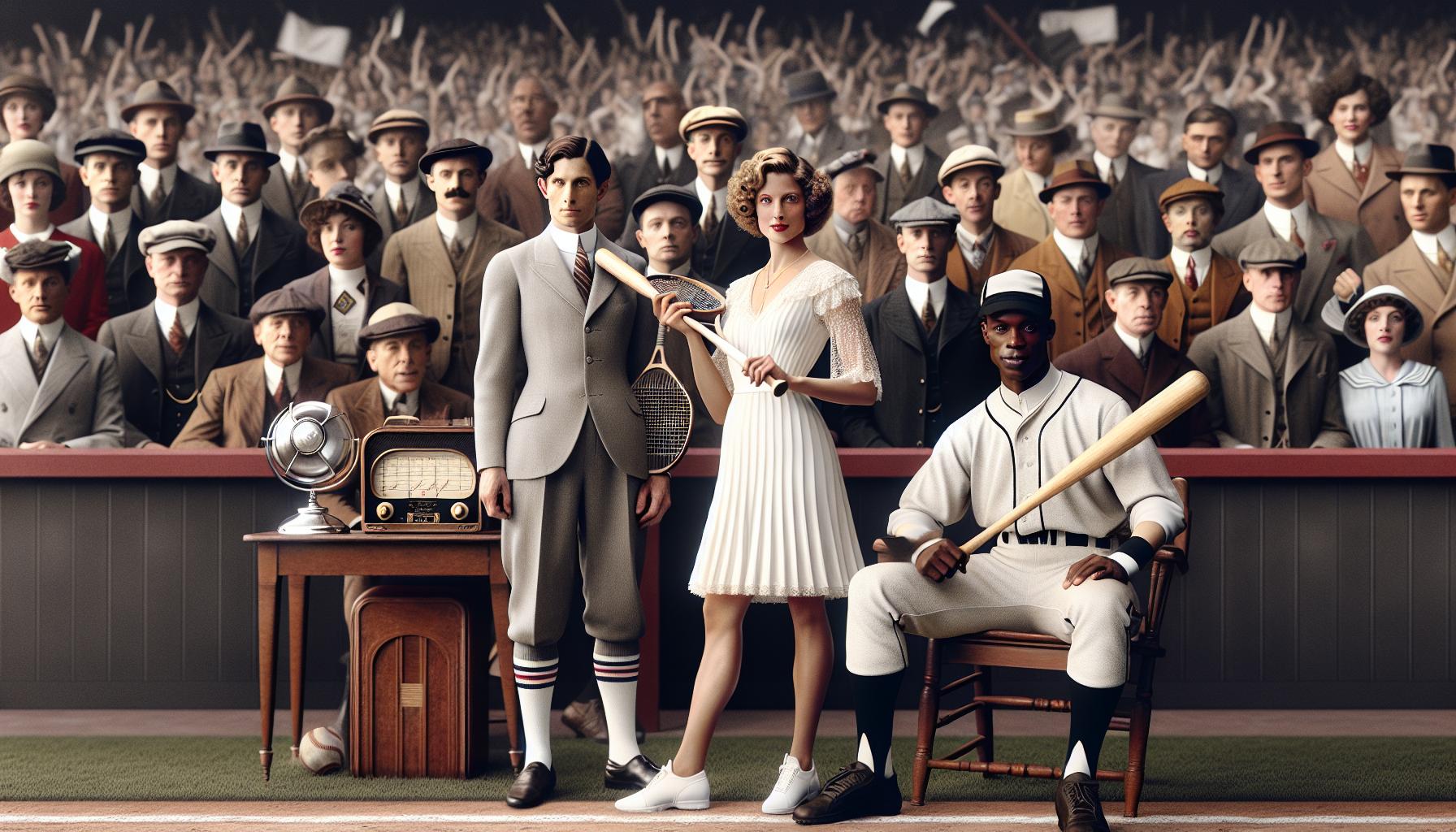The 1920s marked a transformative era in sports, where the thrill of competition captivated audiences like never before. This decade, often dubbed the “Roaring Twenties,” saw the rise of iconic athletes and the birth of modern sports culture. With the advent of radio broadcasting, fans could now follow their favorite teams and players from the comfort of their homes, igniting a passion for sports that would endure for generations.
As baseball, boxing, and football gained immense popularity, legendary figures like Babe Ruth and Jack Dempsey became household names. The 1920s not only showcased athletic prowess but also reflected societal changes, including the emergence of women in sports and the breaking of racial barriers. Understanding this dynamic period reveals how sports evolved into a significant aspect of American identity, setting the stage for the future of athletics.
Key Takeaways
- Transformation of Sports Culture: The 1920s marked a significant change in how sports were perceived, blending athleticism with entertainment and solidifying their place in American society.
- Rise of Iconic Athletes: Legendary figures like Babe Ruth in baseball, Jack Dempsey in boxing, and Red Grange in football emerged during this decade, becoming household names and influencing future generations.
- Impact of Radio Broadcasting: The introduction of radio allowed fans to connect with sports events in real-time, increasing engagement and broadening the audience, which laid the foundation for modern sports broadcasting.
- Increased Participation of Women: The decade saw a rise in female athletes, with figures like Helen Wills and Babe Didrikson challenging traditional gender roles and gaining recognition in various sports.
- Breaking Racial Barriers: The 1920s initiated changes in racial integration within professional leagues, paving the way for athletes like Jackie Robinson and fostering inclusivity in sports culture.
- Foundations for Modern Sports: The events and developments of the 1920s established key concepts that shaped the contemporary sports landscape, from commercialization to athlete celebrity status.
Sports 1920s
The 1920s marked a significant transformation in the landscape of sports, blending entertainment and athleticism. Baseball emerged as America’s favorite pastime, propelled by players like Babe Ruth, who shattered records and drew massive crowds. The 1927 World Series set attendance records, attracting over 200,000 fans.
Boxing’s popularity soared with champions such as Jack Dempsey, who captivated audiences with thrilling matches. Dempsey’s 1927 fight against Gene Tunney drew around 120,000 spectators and generated substantial media coverage, further enhancing the sport’s following.
Football also gained momentum during this decade, transitioning from college to professional leagues. The formation of the National Football League (NFL) in 1920 laid the groundwork for the sport’s future growth. Significant rivalries and the emergence of star players contributed to the increasing fan base.
Radio broadcasting played a crucial role in connecting fans to sporting events. With the ability to reach millions, radio became an essential medium for following games and athletes. As a result, sports reached a wider audience, solidifying their place in American culture.
The 1920s also witnessed the rise of women in sports, breaking traditional barriers. Athletes like Helen Wills in tennis and Babe Didrikson in multiple sports began to gain recognition and support, paving the way for future generations.
Racial barriers began to crumble as well, with the integration of African American athletes into professional leagues. Jackie Robinson’s later legacy stems from this era’s seeds, signaling a shift in societal attitudes toward race in sports.
The decade set the foundation for modern sports culture, intertwining commercial success and celebrity status, shaping the identity of sports in America.
Popular Sports During the 1920s

The 1920s showcased a diverse range of sports capturing the public’s interest, with baseball, boxing, and football emerging as significant activities during this era. Each sport contributed to the decade’s cultural fabric, reflecting societal changes and the growing commercial aspects of athletics.
Baseball: The National Pastime
Baseball thrived in the 1920s, solidifying its reputation as America’s favorite sport. Iconic players like Babe Ruth captivated audiences with their incredible performances, contributing to baseball’s status as the national pastime. The 1927 World Series marked a pinnacle moment, featuring Ruth’s New York Yankees, which attracted immense crowds and media attention. Stadiums like Yankee Stadium became legendary venues, symbolizing the sport’s cultural significance.
Boxing: The Sport of Champions
Boxing gained immense popularity, with matches drawing record audiences and substantial media coverage. Jack Dempsey emerged as a dominant figure, captivating fans with his powerful punches and charismatic persona. His 1927 fight against Gene Tunney not only showcased athletic prowess but also highlighted the growing celebrity culture surrounding athletes. Events at venues like Madison Square Garden transformed boxing into a major American spectacle.
Football: Rise of College Football
Football experienced significant growth throughout the 1920s, particularly at the collegiate level. The formation of the National Football League (NFL) in 1920 set the stage for the sport’s commercialization and increased visibility. College football games drew large crowds, creating a sense of community among supporters and transforming universities into sporting powerhouses. Schools like Notre Dame gained national recognition, further solidifying the sport’s place in American culture.
Key Athletes of the 1920s

The 1920s showcased remarkable athletes who left an indelible mark on American sports. Their achievements not only captivated fans but also significantly influenced the evolving sports culture.
Babe Ruth: The Sultan of Swat
Babe Ruth transformed baseball with his unmatched power-hitting abilities. Known for his charismatic personality, he played for the New York Yankees and achieved a record 60 home runs in 1927. Ruth’s performances popularized baseball, making it America’s pastime. His larger-than-life persona created a link between sports and celebrity, drawing thousands of fans to stadiums across the country. He finished the decade with a career total of 714 home runs, a record that stood for decades.
Jack Dempsey: The Manassa Mauler
Jack Dempsey dominated boxing in the 1920s, earning the nickname “The Manassa Mauler.” His thrilling fights captured the public’s imagination, with his 1927 bout against Gene Tunney drawing an unprecedented audience. Dempsey’s aggressive style and powerful punches made him a fan favorite, while his ability to connect with spectators through film and radio further solidified his status. His influence extended beyond the ring, contributing to boxing’s growth into a major sport during the decade.
Red Grange: The Galloping Ghost
Red Grange revolutionized college football, earning the nickname “The Galloping Ghost” for his electrifying speed and agility. After a stellar career at the University of Illinois, he signed with the Chicago Bears in 1925. Grange’s signing marked a turning point in professional football, generating extensive media coverage and drawing large crowds to games. His presence elevated football’s popularity, paving the way for the sport’s commercialization in the following decades. Grange finished his career with 3,750 rushing yards and set several records that showcased his extraordinary talent on the field.
The Impact of the 1920s on Modern Sports

The 1920s marked a critical turning point for modern sports, reshaping how sports are perceived and enjoyed today. Increased media coverage established sport as a significant part of American culture, influencing today’s broadcasting and marketing strategies.
Athletes like Babe Ruth and Jack Dempsey became household names, setting the stage for the celebrity culture in sports. Their notoriety helped create a fan culture that persists and thrives with fan engagement through social media platforms and personal branding.
The rise of radio broadcasting brought sports into homes across the nation, facilitating real-time connections between athletes and fans. This development laid the groundwork for contemporary sports broadcasting, where instant access to games and events connects millions of fans regardless of location.
The establishment of the NFL in 1920 transformed football into a major professional sport. This organizational structure influenced today’s leagues, demonstrating the importance of formal associations in advancing sports professionalism and commercialization.
The increased participation of women in sports during the 1920s marked a significant shift in gender dynamics. Athletes like Helen Wills and Babe Didrikson broke barriers, making pathways for future female athletes and greater equity in sports participation and visibility.
In addition, the breaking of racial barriers in the 1920s set precedents for integration in professional leagues, which continues to resonate in modern sports culture. The desire for inclusivity and diversity remains vital, with ongoing efforts to address inequality in various sporting arenas.
Overall, the developments of the 1920s established foundational concepts that modern sports culture relies on, from commercial success to the embodiment of celebrities, affecting sports’ societal role and identity in the United States.
Cultural Significance of Sports in the 1920s
The 1920s marked a critical turning point in the cultural landscape of the United States, with sports playing an essential role in shaping social dynamics. Sports provided a platform for unity during a decade defined by economic prosperity and cultural changes. Public enthusiasm for baseball, boxing, and football transcended regional boundaries, fostering a shared national identity among diverse populations.
Key athletes emerged as cultural icons, influencing public perception and inspiring future generations. Babe Ruth’s larger-than-life persona made him a symbol of American exceptionalism, while Jack Dempsey’s prowess in the ring solidified boxing’s place in the national consciousness. Their achievements extended beyond sports, making them household names and cultural figures representing the Roaring Twenties’ spirit.
Women’s sports gained traction, with athletes like Helen Wills and Babe Didrikson paving the way. Wills excelled in tennis, showcasing women’s capabilities, while Didrikson’s versatility in various sports highlighted the evolving role of women in athletics. This shift reflected broader societal transformations, challenging traditional gender norms and promoting female representation in sports.
The 1920s also saw a gradual breaking of racial barriers. African American athletes such as Jackie Robinson began to gain recognition, laying the foundation for future integration in professional leagues. This progression challenged prevailing racial attitudes, fostering a more inclusive environment within the sports community.
The era’s increased media coverage transformed sports into a spectacle, allowing fans to experience games through radio broadcasts. This accessible format encouraged communal viewing among audiences, solidifying sports’ position as a vital component of American culture.
Sports in the 1920s served as a lens through which societal changes were viewed. The decade’s athletes not only entertained but also addressed larger issues related to gender, race, and national identity. The impact of this era continues to resonate, influencing the role of sports in American culture today.
Cultural Symbols That Transcended Sports
The 1920s marked a defining era for sports in America. Iconic figures like Babe Ruth and Jack Dempsey not only dominated their respective fields but also became cultural symbols that transcended sports. The decade’s innovations in media and the emergence of professional leagues laid the groundwork for modern sports culture.
As sports evolved, they reflected broader societal changes, including the rise of women athletes and the breaking of racial barriers. These developments fostered a sense of community and excitement that remains integral to sports today. The legacy of the 1920s continues to influence how sports are perceived and celebrated, shaping the landscape for future generations.